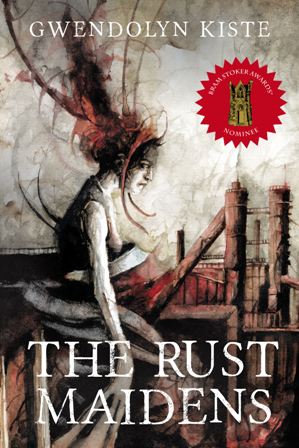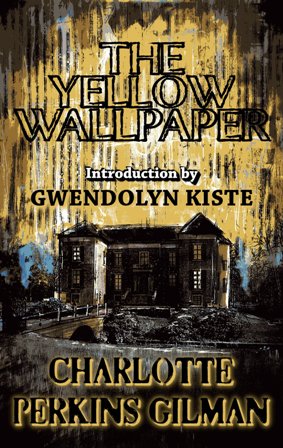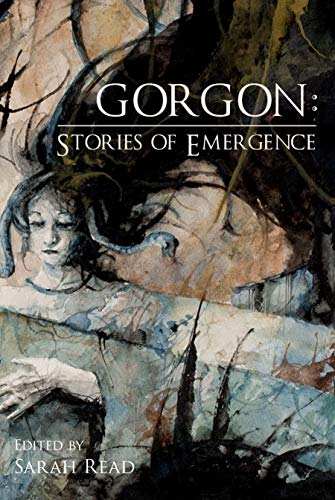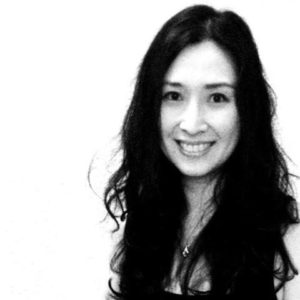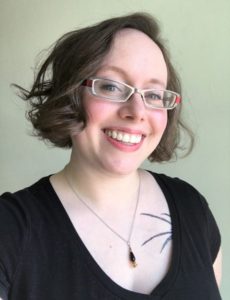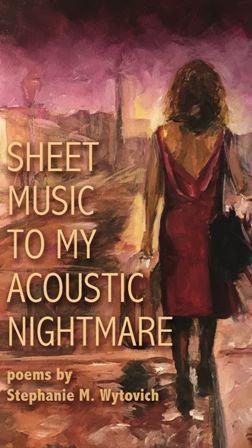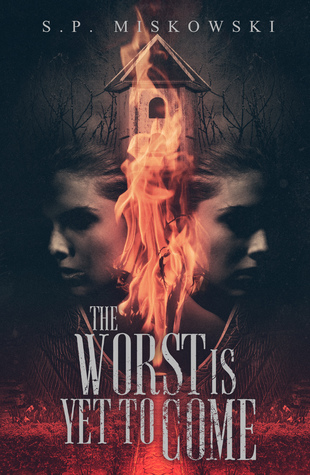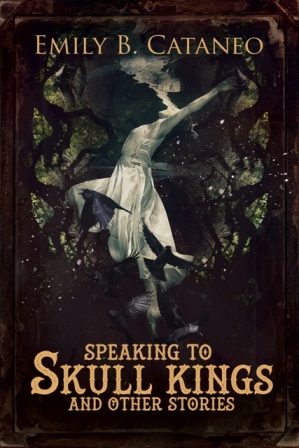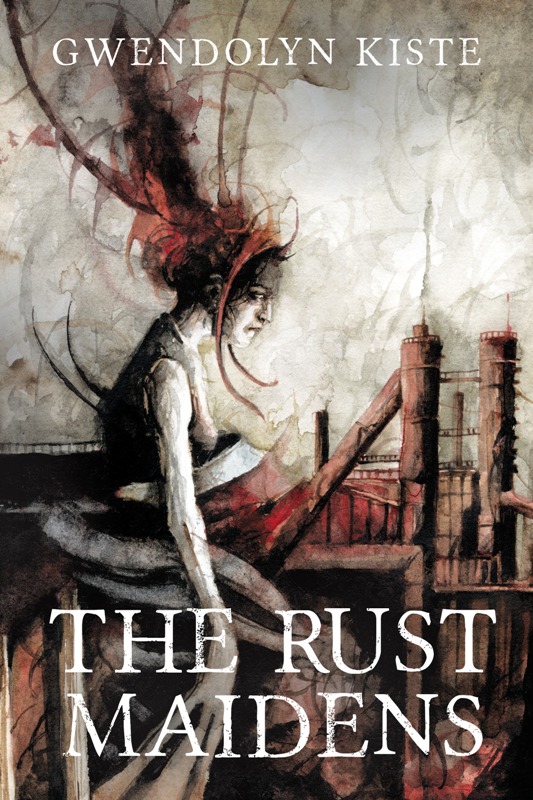Welcome back, and welcome to part one of my October author roundtable series! I’m thrilled to be featuring eight fabulous authors, all of whom have brand-new books out this year that you should be reading!
So without any further delay, onward with this roundtable discussion!
Let’s start with the basics. Tell me about your latest release. What was the process like putting this book together, and what, if any, challenges did you run into along the way?
CALVIN DEMMER: My latest release is a flash fiction collection, The Sea Was a Fair Master, which contains twenty-three dark tales, ranging from science fiction, horror, fantasy, crime, to the weird. The process was pretty smooth. I’d say the hardest part for me was deciding on the order of the stories once I had picked which to collect. I wanted a certain flow to the book, and that took a little time to get right.
DOUNGJAI GAM: glass slipper dreams, shattered is my first collection of flash fiction and poetry. it was released by Apokrupha this past August. it took me about three years to put this collection together from when Jacob Haddon first approached me about it at AnthoCon 2015. there’s been plenty of challenges along the way, but thankfully none of those issues were in a professional sense…I just had a lot of personal things going on in that period and sometimes it got too tough to balance. Jacob is absolutely amazing to work with, and the key statement he made to me more than once was that he didn’t want my first book to be something I look back on in ten years and regret ever doing, and I have no regrets about it.
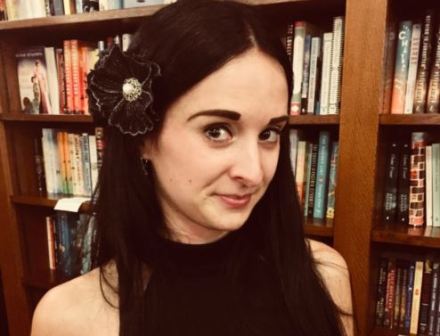 CHRISTA CARMEN: The stories in Something Borrowed, Something Blood-Soaked were published in places like Fireside Fiction, DarkFuse Magazine (which unfortunately exists no more), Third Flatiron’s Strange Beasties anthology, Unnerving Magazine, Tales to Terrify, and Year’s Best Hardcore Horror Volume 2, to name a few. My publisher asked upfront that a certain percentage of the stories in collection submissions be reprints, so once I’d filled that quota, I added two stories that had been published by markets no longer in circulation, changed one story that had appeared on a podcast to the novella version I’d been hoping for a chance to unveil, and chose three brand new stories to tie everything together. I think readers can appreciate a collection that includes reprints, especially from magazines and anthologies they may have read previously, and hopefully enjoyed, as well as a handful of new tales that allows them to experience an author’s latest work.
CHRISTA CARMEN: The stories in Something Borrowed, Something Blood-Soaked were published in places like Fireside Fiction, DarkFuse Magazine (which unfortunately exists no more), Third Flatiron’s Strange Beasties anthology, Unnerving Magazine, Tales to Terrify, and Year’s Best Hardcore Horror Volume 2, to name a few. My publisher asked upfront that a certain percentage of the stories in collection submissions be reprints, so once I’d filled that quota, I added two stories that had been published by markets no longer in circulation, changed one story that had appeared on a podcast to the novella version I’d been hoping for a chance to unveil, and chose three brand new stories to tie everything together. I think readers can appreciate a collection that includes reprints, especially from magazines and anthologies they may have read previously, and hopefully enjoyed, as well as a handful of new tales that allows them to experience an author’s latest work.
If there were any challenges I ran into along the way, it was what order to place the stories in. The stories in Something Borrowed contain ghosts, apocalypse-inciting rains, witches, depraved serial killers, more ghosts, evil shadow creatures, zombies, haunted houses, long-preserved corpses, newly-opened mausoleums, sinister trains, and out-of-place staircases. My publisher felt that “Thirsty Creatures” had the best first line to open the book with (“The trees were fire and the sky was panicked birds and the horse was made of bone.”), but aside from that, ordering the collection was a study in balancing the types of horror stories (a ghost story on the heels of another ghost story, or my take on the babysitter urban legend sandwiched between two ghost stories?) with the themes represented within.
ANYA MARTIN: Sleeping with the Monster is my debut collection, and I’m grateful to Steve Berman of Lethe Press for his longstanding interest in and belief in my fiction. I was hesitant to put out a collection until I had a solid slate of stories with a certain degree of thematic unity. And conventional wisdom seems to be not to rush. These aren’t all my published stories but I feel like they represent a “generation” of my work.
I knew which stories I wanted to include from the start, so my biggest challenge was writing “Jehessimin,” the original novella that is also included. I developed carpal tunnel syndrome in the past year and that and other health issues and responsibilities contributed to it taking months longer than I expected. Fortunately Steve was a patient and understanding publisher. On the other hand, the additional time allowed the story to gel more organically and take some unexpected twists which I think/hope strengthened it. Also recently on the final stretch before the book’s release, my mother had a medical emergency so I haven’t been able to promote it as extensively as I meant to and had to cancel my con appearance at the HP Lovecraft Film Festival. I did get to do Daniel Braum’s Night Time Logic Reading Series with the fantastic Robert Levy at KGB Bar in Manhattan on Tuesday Sept. 25 and hope to attend World Fantasy Con 2018 Nov. 1-4 in Baltimore.
MICHAEL GRIFFIN: Assembling a second collection is very different. Putting together your first collection, you have to choose from everything you’ve ever written, and for most writers that means a lot more stories to select from, and most of the earliest ones will be left out. It’s a matter of figuring out where to start, and which of the less-mature work actually does fit with the more recent stories.
For the second book, it’s more about picking up where you left off with the first. Presumably by that time, your work has become more coherent and consistent, so while you have a smaller number of stories to choose from, there are probably not as many that aren’t up to the quality standard of the rest, or which should be excluded for not fitting with the feel of the others.
One thing that made the assembly of The Human Alchemy more complicated was the connection between several stories, with characters and settings and organizations cross-threaded between them, which meant I had to consider how those might work together to best advantage.
Another consideration is that readers (and consequently, publishers) want to see at least one unpublished “exclusive” story in a collection. While when assembling my first, I had quite a few unpublished stories available to choose from, but because for the past several years I’ve been publishing stories as fast as I could write them, this time I had to create something new. I reached a stage where the collection was ready to go, except first I had to write something new and hold it aside for the book. I could’ve done more than one new, exclusive story, but the book was already pretty long, so one was enough.
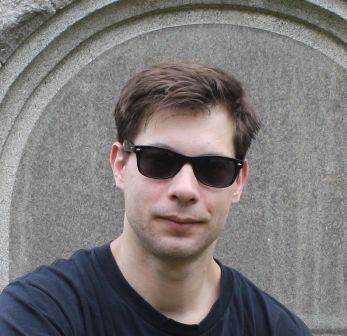 LEE FORMAN: My novella, Zero Perspective, published recently. Putting this book together was actually a surprise. My original intention for the story was just that—a short story. I didn’t set out to make it a book at first, but the story kept growing and ideas continued worming their way onto the page. As I grew an affinity for the characters I started experimenting with them to see what they would do. I didn’t know where the story would go or how it would end, but once it reached a certain length the idea of making it a book came to me. I’d been working on another project intended to be a novel, but wasn’t happy with how it came out and decided to re-write the entire thing. Since Zero Perspective was going so smoothly, I decided to focus my efforts on that and publish it first. One of the biggest challenges was trying to meet a set deadline. There was an opportunity to promote the book at a local event and I didn’t want to miss it. I dealt with lost packages three times while proofing the book and creating promotional materials. I met the deadline within only a few days.
LEE FORMAN: My novella, Zero Perspective, published recently. Putting this book together was actually a surprise. My original intention for the story was just that—a short story. I didn’t set out to make it a book at first, but the story kept growing and ideas continued worming their way onto the page. As I grew an affinity for the characters I started experimenting with them to see what they would do. I didn’t know where the story would go or how it would end, but once it reached a certain length the idea of making it a book came to me. I’d been working on another project intended to be a novel, but wasn’t happy with how it came out and decided to re-write the entire thing. Since Zero Perspective was going so smoothly, I decided to focus my efforts on that and publish it first. One of the biggest challenges was trying to meet a set deadline. There was an opportunity to promote the book at a local event and I didn’t want to miss it. I dealt with lost packages three times while proofing the book and creating promotional materials. I met the deadline within only a few days.
LORI TITUS: This is a book that I’ve been waiting to write for a long time. Back when I first started writing The Marradith Ryder Series, I had an idea for another set of characters, existing in the same world. I wanted the characters to be older, harder, and a lot messier than the teenage heroine and her crew in Hunting in Closed Spaces.
In Soul Bonded, the main character is Natasha Taylor. She owns a small business, cares for an ailing mother, and between the two doesn’t have much time for a life of her own. She’s in a financial bind. There’s only two choices; take out a loan on her family home to save her business and possibly risk losing both, or close the store. Worse than that, her mother’s early onset Alzheimer’s has gotten to the point she may soon need to be put into a nursing home.
Natasha is a witch, and her family has had dealings with the supernatural. Particularly her deceased father, Ezekiel. He was a former priest who left the church but never stopped performing exorcisms.
Enter Henry Pollard, an enigmatic businessman with a proposition: give up part of her soul for a number of years, and work for a firm that deals in demon contracts. In return, her mother will be returned to health and her financial problems solved.
This novel is the beginning of a possible series. It’s really about the line between what we say we’ll do and how far we can bend the rules of our personal ethics. Natasha has to tread and sometimes cross the line of right and wrong to get what she needs and wants.
The biggest challenge to writing this book was scheduling. I had several other projects that were slated for completion first and a few other projects in progress when I started it. I’m happy that I was able to pull it off!
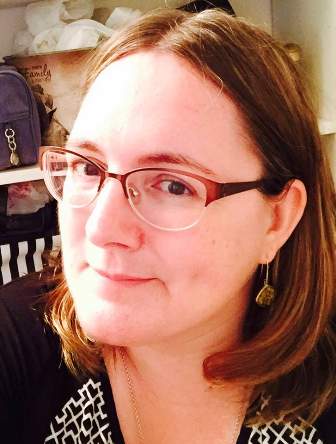 GEMMA FILES: Well. I’m supposed to be writing a new novel—Nightcrawling, for ChiZine Publications—and I am, though it’s taking longer than I expected. Like Experimental Film, it draws on aspects of my own history, probably plumbing a much more traumatic time period, yet I’d somehow managed to convince myself it would be easier this time around! Anyhow, it’s not, so I’m taking a slight hiatus from banging my head against it to write a book of essays about horror culture instead, for CZP’s new nonfiction line (Dark Comforts, which starts by taking the usual non-horror fan question—ie, “Isn’t real life horrible enough for you?”—and answering it: “Yes, which is why I decompress by enjoying horror I can actually control.”)
GEMMA FILES: Well. I’m supposed to be writing a new novel—Nightcrawling, for ChiZine Publications—and I am, though it’s taking longer than I expected. Like Experimental Film, it draws on aspects of my own history, probably plumbing a much more traumatic time period, yet I’d somehow managed to convince myself it would be easier this time around! Anyhow, it’s not, so I’m taking a slight hiatus from banging my head against it to write a book of essays about horror culture instead, for CZP’s new nonfiction line (Dark Comforts, which starts by taking the usual non-horror fan question—ie, “Isn’t real life horrible enough for you?”—and answering it: “Yes, which is why I decompress by enjoying horror I can actually control.”)
That said, my “new book” right now would probably be Drawn Up From Deep Places, from Trepidatio, which is really a collection of older short fiction (much like the collection I have coming out at some point later on from Cemetery Dance, called Dark Is Better). It’s a sort of companion to my first Trepidatio collection, Spectral Evidence, which was published earlier this year. In both cases, the most challenging thing about putting the books together was going through all the stuff I’ve written since my first two collections (Kissing Carrion and The Worm in Every Heart, released almost twenty years ago) and seeing how it might go together. Luckily, there are stories in both books which share the same characters and make a sort of story cycle of their own if read in order.
In Spectral Evidence, those stories involve the Cornish Sisters and A-Cat Chatwin, two monster-killers (one half-monster) and a demon-descended holler witch who meet in jail, help each other escape then keep running into each other, but there’s only three of them and the rest of the stories—though equally chick-heavy—are about very different sets of oddballs operating within a dark urban paranormal contemporary universe like the one from my book We Will All Go Down Together. In Drawn Up From Deep Places, meanwhile, things are A) a bit more historical and B) a bit more dude-centric. The two story-cycles threaded throughout it either play around in the same Weird Western world from my Hexslinger series or involve two magician-pirates and a witch directly related to WWAGDT‘s Five-Family Coven. And…that’s the pitch, basically.
There’s a new collection of my poetry coming out soon too (Invocabulary, from Aqueduct Press), full of witchcraft, gods and monsters and monster-gods, because that is how I roll. So in other words, I’m reaping the rewards of my success, and it frankly rocks. My main challenge is thus the extremely first world problem of trying to meet too many deadlines because “too many” people I respect and want to work with want stuff from me. That and the eternal struggle against my own body (insomnia, peri-menopause, anxiety), my son’s recent transfer to high school, plus the general current flaming trash fire of global reality. Etc.
Most authors have certain ideas or concepts they return to over and over. What themes interest you most as a writer, and how do those themes play into your current book?
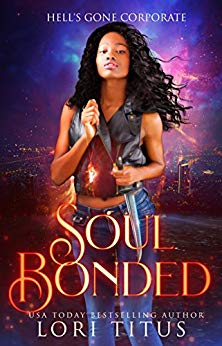 LORI TITUS: Family and loyalty are big themes in my writing and I return to both of those here. The way we act in the closest of our relationships really informs how we live our lives. I love playing with the consequences involved when love or familial ties are at stake.
LORI TITUS: Family and loyalty are big themes in my writing and I return to both of those here. The way we act in the closest of our relationships really informs how we live our lives. I love playing with the consequences involved when love or familial ties are at stake.
LEE FORMAN: I tend to write a lot of creature stories and dark, emotive fiction. I find them thoroughly enjoyable to create. I grew up loving horror films with monsters and all things inhuman. They’ve been my favorite aspect of horror film and literature as long as I can remember. These themes worked great for Zero Perspective, as they allowed me to incorporate both concepts into the horror / sci-fi combination.
GEMMA FILES: “Monster pride” is a concept I come back to a lot: the idea that maybe the ways in which we’re broken and odd and freakish—the qualities that make us pariahs or monsters according to “normal” standards—are the very things which prepare us to not break when true monstrosity comes on the scene. I’m a big fan of characters like Mike Mignola’s Hellboy, for example, who knows he’s supposed to be the Great Beast of the Apocalypse but nevertheless says “screw THAT shit” and fights the same cosmic horrors he’s kin to instead, partially out of sheer perversity. My favourite gods have always been Loki and all the other tricksters, shape-shifters and thieves who can straddle several liminal spaces at once, powered as much by black humour as by any sort of thirst for revenge or victory. And while I’m capable of appreciating how difficult choosing to be good really is, it’s the scoundrels, villains and antiheroes who remain my very favourites. I’m interested in people who pay prices, who go through hell and come out changed (maybe for the better, maybe not), who make their own wounds into weapons.
Part of this probably comes out of having spent a good portion of my life thinking I was just inherently “bad” somehow, unfixable, weird, unable to bring myself up to code; giving birth to a boy with special needs sort of helped in that regard, especially once I realized that if people had been looking for autism in girls at all when I was the age he is now, I might have gotten an Asperger’s Syndrome diagnosis. But then again, part of this probably also just comes from being female, geeky, angry and neuroatypical. Of feeling like everything I encountered socially was a joke or an attack, a total chore, and just not realizing the reason it did was because I was probably channeling my social intelligence through a part of my brain usually meant for doing math problems.
So yeah, I have a lot of investment in the idea that people who think they aren’t good for much may eventually discover they’re meant for something special, or at least for something particular. Does it mean that everything bad or wrong they ever did is forgiven? Not necessarily. Does it mean they’re good and perfect now they’ve discovered their purpose in life? Depends on the purpose, I guess. But I do like finding ways for my characters to love at least other people, even if they can never entirely love themselves. And become proud of whatever monster they happen to be, too, if only because that IS what they are, after all. No other way around it.
DOUNGJAI GAM: for me, the themes I keep coming back to are fear, love, sorrow, revenge, being haunted, and their motivating factors. as I alluded to in the previous question, in the time period I was writing the pieces for my collection, there was a lot going on: in a fourteen month span, there were at least seven deaths that hit me hard (the worst one being my brother’s sudden death); I went through a separation and eventual divorce and then unexpectedly fell in love; there were a few hard lessons learned. I joked with my editor about having the book subtitled, “stories of love and death,” because that’s like 90% of the collection.
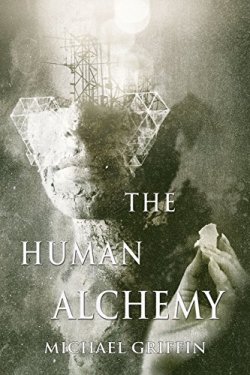 MICHAEL GRIFFIN: For me the themes I’ve returned to repeatedly have come about without my having intentionally tried to make them a particular focus. I’ve just kept circling around and around certain elements due to my own obsession or compulsion. People have pointed out that most of my stories have a major focus on relationships, often in a state of breakdown or disconnection, as well as feelings like frustrated desire. Many of my characters are creative people. Also certain geographic places have recurred in my work, especially the Portland area, the Oregon coast and Mt. Hood.
MICHAEL GRIFFIN: For me the themes I’ve returned to repeatedly have come about without my having intentionally tried to make them a particular focus. I’ve just kept circling around and around certain elements due to my own obsession or compulsion. People have pointed out that most of my stories have a major focus on relationships, often in a state of breakdown or disconnection, as well as feelings like frustrated desire. Many of my characters are creative people. Also certain geographic places have recurred in my work, especially the Portland area, the Oregon coast and Mt. Hood.
One aspect of place that really interests me is following a character who departs from their usual, comfortable place, their home, and goes to some new, different place, which shifts their equilibrium and makes every moment a new discovery, sometimes full of wonder, and other times bringing uncertainty or fear.
I only recently came to understand that I often follow this pattern where a main character leaves a place they’re familiar with and goes to a new, special place. In some cases, as in “The Smoke Lodge,” the place isn’t unfamiliar to the main character but it’s unfamiliar to the reader, and there’s one or more other characters who make the journey of discovery at the same time.
ANYA MARTIN: Definitely, yes, though those themes have evolved over my writing life. For this first collection, all the stories deal with relationships to some extent or another. Not all the stories have explicit “monsters,” vis-à-vis “Grass,” but I do find that “monstrous” behavior by humans and its impact on others can sometimes be explored more effectively through a lens other than realism. Otherwise, I can’t say I did this on purpose but almost all my protagonists are women, except a male dog and a gargoyle, and even in those two stories, there’s a central female character. I am sure I will write a male protagonist when that makes sense for a story, but there has been so much male point-of-view fiction that I don’t see any rush just to prove anything. Finally if the collection has a “theme song,” it would be “Illusions” by Frederick Hollander, sung by Marlene Dietrich in the film A Foreign Affair (1948). I wanted to quote its lyrics at the front of the book but it’s always complicated and can be expensive to get permissions. It’s easy to find on YouTube if you want to give it a listen.
CALVIN DEMMER: There are definitely certain themes I return to, but I also try and push myself to explore new things. At the moment, I do seem to focus on the evil humanity can do. Even when my stories have monsters or other dark cosmic happenings, I do tend to have characters that walk a fine line between good and evil. I’ve often explored how love can create some extreme scenarios, the loss of innocence, or how continuous struggling can lead people to do things that don’t seem to fit their character. The sea also played quite a role in my latest book, mainly because I think it has a certain mystique that is interesting to play with.
CHRISTA CARMEN: The themes that interest me to the point where I return to them over and over are society’s treatment of those suffering from substance abuse and mental health issues, the way individuals themselves react to struggling with these issues, persistent misogyny in the world today, the concept of redemption, or at least, of second chances, how humans deal with death and grief, and why men just don’t seem capable of trusting their girlfriends, wives, sisters, mothers, and mistresses, etcetera, when these women say that something is not right, or when they beg not to go into that isolated cabin in the woods. These themes play into my collection in that I try to approach them from disparate angles. The characters suffering from addiction in Something Borrowed, Something Blood-Soaked are numerous and varied. They are regretful ghosts, broken mothers, desperate young women, and reanimated Deadites.
It is important for me to tell the stories of characters who are struggling with or have struggled with addiction because I have been privy to so many of these stories in the real world. The people who want to vilify those suffering from addiction project the same story onto everyone: they are bad, lazy, selfish people who knew the risks when they first used drugs, did so anyway, and so deserve their lot in life. Sadly, many individuals tasked with helping those struggling with substance abuse also assign the same stories to the sufferers. But everyone’s path into addiction is different, as is their path out. What that means is that their stories are profoundly unique, and I’ve yet to hear a story that wasn’t worth sharing. This insight has led me to want to explore themes of addiction and recovery within my fiction, believing as I do, that those characters will have rich, interesting, albeit sometimes tragic lives to lead.
I’ve also found the idea of second chances worth exploring in my fiction because the concept of second chances in the real world is such a tricky one. Our society is based on a very unjust, nonsensical system of who is deserving of a second chance versus who is not. Ultimately, the reward of pursuing any theme that really speaks to you as a writer is in the journey itself, the exploration that takes place over the course of writing a story. I’m certain I will tackle the themes I’ve discussed here in other stories in the future, and who’s to say if that path will look anything like the one that led me to the pieces in Something Borrowed, Something Blood-Soaked?
So that’s part one in our interview series! Join us again next week as we discuss book covers and the future of horror and weird fiction!
Happy reading!
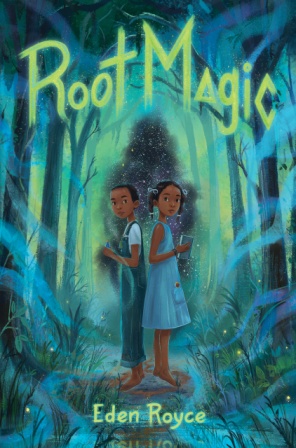 EDEN ROYCE: Stick with it. Find a deep reason within yourself to write. Cling to that reason with a sweat-slick grip when you have those low points or feel your love of writing beginning to wane.
EDEN ROYCE: Stick with it. Find a deep reason within yourself to write. Cling to that reason with a sweat-slick grip when you have those low points or feel your love of writing beginning to wane.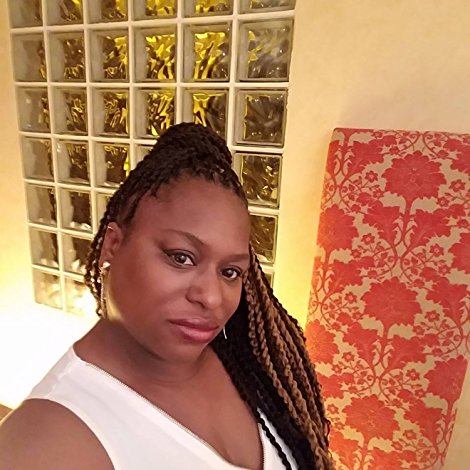 R.J. JOSEPH: I haven’t pulled out of my middle-aged cynicism far enough about this genre to really offer really positive advice. Sigh. However, I will borrow some that I repeat to myself often. I had the chance to sit in on a talk with Tananarive Due a couple of years ago. As I mentioned earlier, I love her work and have been frustrated that I don’t see people paying her to be all over the horror genre. I asked her if she was frustrated at having been at this for so long and watching folks act like Jordan Peele (who’s a genius, by the way) is the first black person they’ve ever seen do horror. She basically said she didn’t have the time to be frustrated because she stayed busy writing, writing, and writing. She said that by not dwelling on frustration, she had tons of work to pitch when the door opened in horror for Black people. I see that worked for her.
R.J. JOSEPH: I haven’t pulled out of my middle-aged cynicism far enough about this genre to really offer really positive advice. Sigh. However, I will borrow some that I repeat to myself often. I had the chance to sit in on a talk with Tananarive Due a couple of years ago. As I mentioned earlier, I love her work and have been frustrated that I don’t see people paying her to be all over the horror genre. I asked her if she was frustrated at having been at this for so long and watching folks act like Jordan Peele (who’s a genius, by the way) is the first black person they’ve ever seen do horror. She basically said she didn’t have the time to be frustrated because she stayed busy writing, writing, and writing. She said that by not dwelling on frustration, she had tons of work to pitch when the door opened in horror for Black people. I see that worked for her.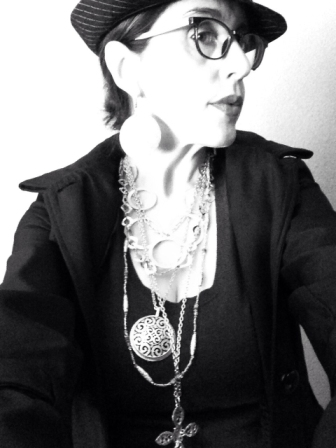 G.G. SILVERMAN: First and foremost, embrace the darkness and write what you want to write. Ignore anyone who says that because you’re a woman, you can’t (or shouldn’t) write horror. Stick to your guns.
G.G. SILVERMAN: First and foremost, embrace the darkness and write what you want to write. Ignore anyone who says that because you’re a woman, you can’t (or shouldn’t) write horror. Stick to your guns.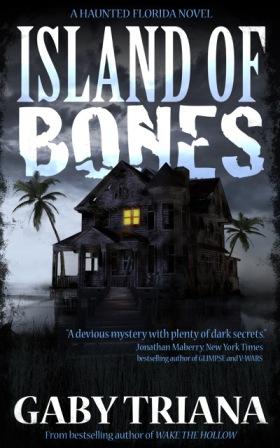 GABY TRIANA: I’ve always wanted to write sci-fi horror. ALIEN is still one of my most favorite movies ever, and it’s always been in the back of my mind to write something set in space. Besides that, I think I’m perfectly happy writing witchy occult novels. It’s taken me a while to find my way home. Now that I’m here, I’m going to explore more. The only other format I’d be interested in writing, only because they say I write in a cinematic, scene-setting way as is, is screenplays. Otherwise, I’m perfectly happy with full-length novels!
GABY TRIANA: I’ve always wanted to write sci-fi horror. ALIEN is still one of my most favorite movies ever, and it’s always been in the back of my mind to write something set in space. Besides that, I think I’m perfectly happy writing witchy occult novels. It’s taken me a while to find my way home. Now that I’m here, I’m going to explore more. The only other format I’d be interested in writing, only because they say I write in a cinematic, scene-setting way as is, is screenplays. Otherwise, I’m perfectly happy with full-length novels!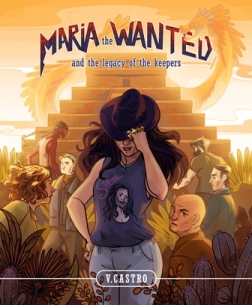 V. CASTRO: I just go for it. I explore all areas because I feel life generates experiences that can be expressed in all subgenres of horror. For me, the story dictates the length. You never know until you begin walking the path.
V. CASTRO: I just go for it. I explore all areas because I feel life generates experiences that can be expressed in all subgenres of horror. For me, the story dictates the length. You never know until you begin walking the path.
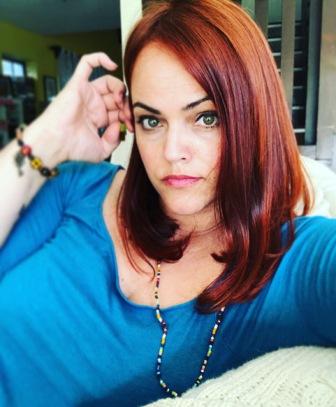
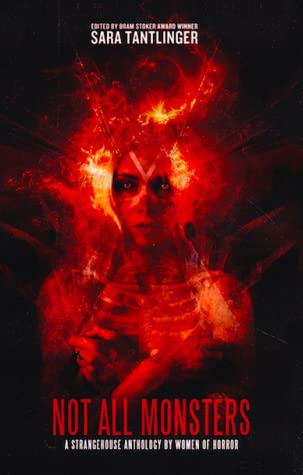
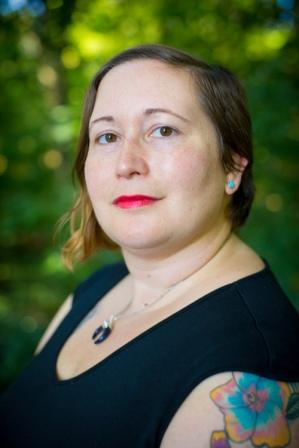
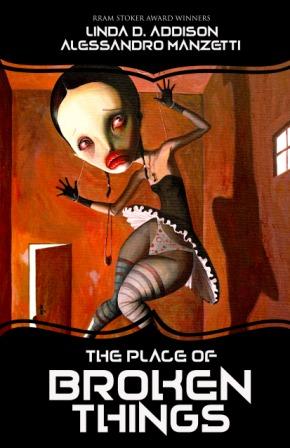
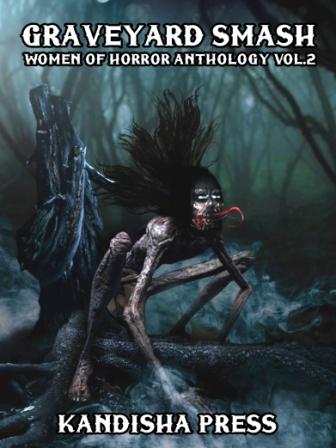
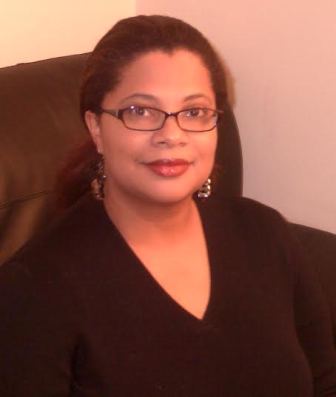
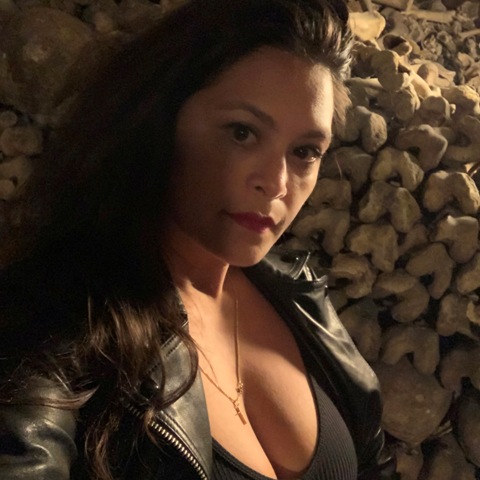
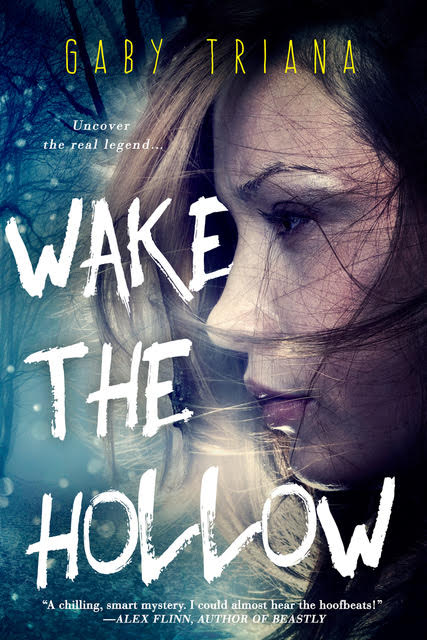
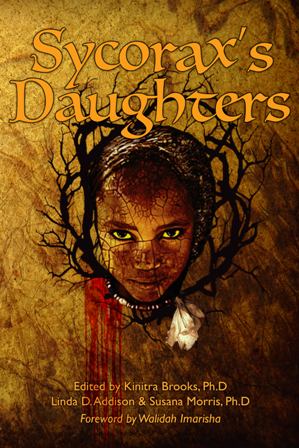
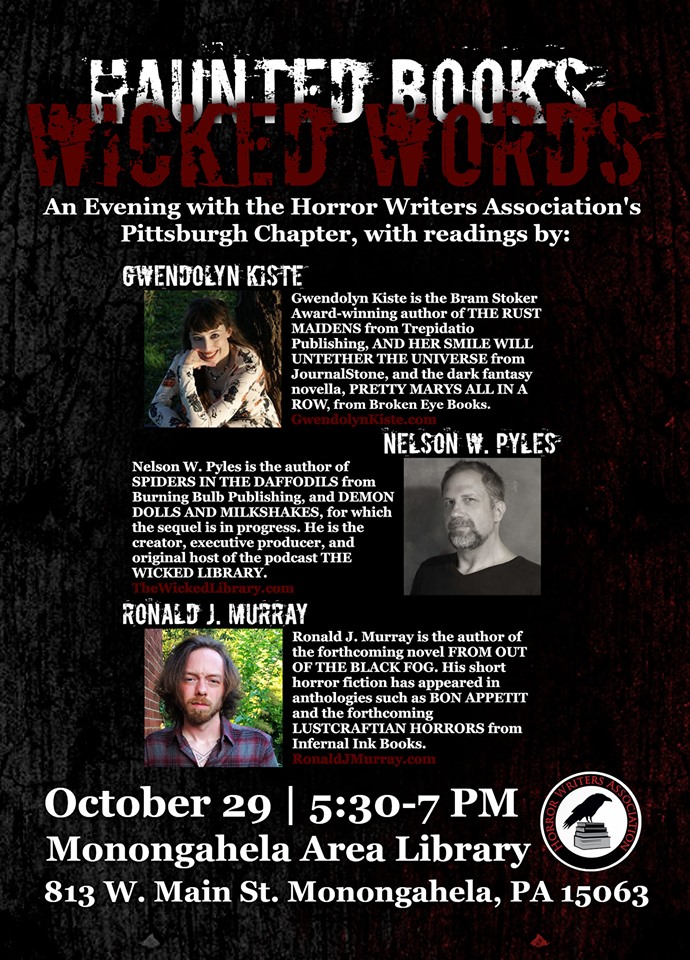
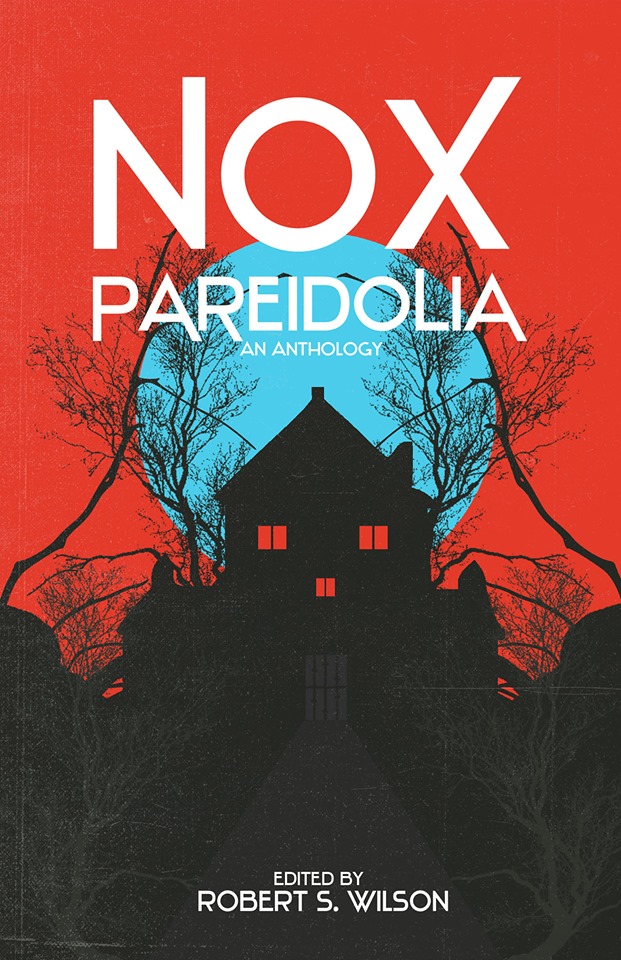 Slated for an October 31st release, this is sure to be one of the very coolest anthologies of the year, and I’m completely elated that I get to be part of it! My story, “When the Nightingale Devours the Stars,” is all about birds, small towns, death cults, and outsiders fighting for their place in the world. It’s a story I’m so proud of, and I am positively overjoyed that it found such a wonderful home.
Slated for an October 31st release, this is sure to be one of the very coolest anthologies of the year, and I’m completely elated that I get to be part of it! My story, “When the Nightingale Devours the Stars,” is all about birds, small towns, death cults, and outsiders fighting for their place in the world. It’s a story I’m so proud of, and I am positively overjoyed that it found such a wonderful home.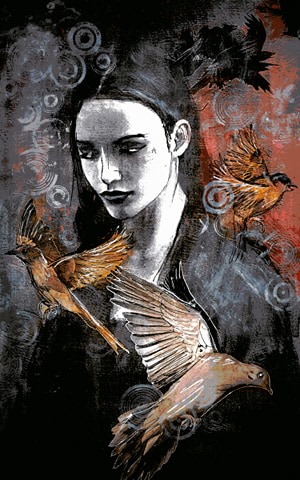 As if these wonderfully weird words weren’t enough, every story in the book has an illustration to accompany it, and as always, the artwork from Luke Spooner is out-of-this-world beautiful. My lovely, creepy birds are featured above, but you can see all the art for NOX on social media by heading over
As if these wonderfully weird words weren’t enough, every story in the book has an illustration to accompany it, and as always, the artwork from Luke Spooner is out-of-this-world beautiful. My lovely, creepy birds are featured above, but you can see all the art for NOX on social media by heading over 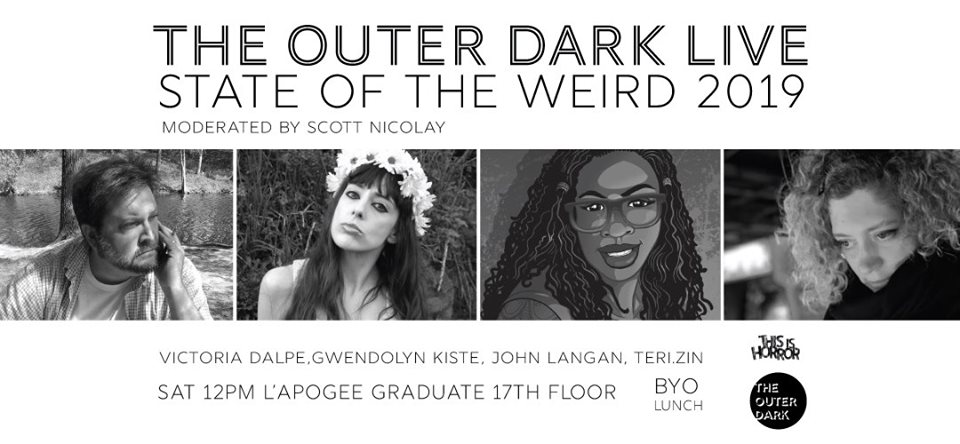 State of the Weird: The Outer Dark Podcast Live! on Saturday, August 24th at 12pm
State of the Weird: The Outer Dark Podcast Live! on Saturday, August 24th at 12pm